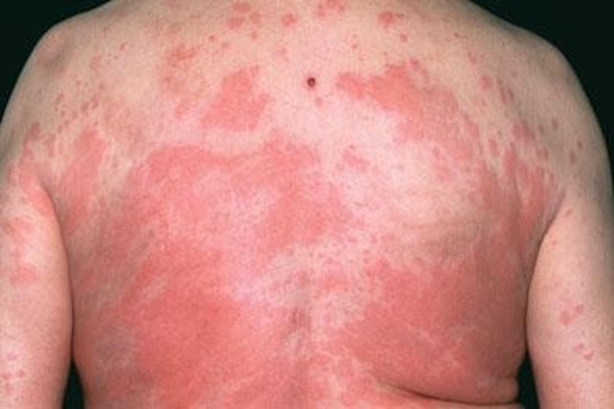A nurse is caring for a client who is receiving parenteral nutrition and identifies that the client has hyperkalemia. Which of the following actions should the nurse take?
Warm formula to room temperature.
Place the client on a cardiac monitor.
Administer IV dextrose.
Request a lactose-free formula.
The Correct Answer is B
A. Warming the formula to room temperature would not address hyperkalemia.
B. Hyperkalemia can lead to cardiac dysrhythmias, so placing the client on a cardiac monitor
allows for continuous cardiac monitoring to detect any changes or abnormalities in heart rhythm.
C. Administering IV dextrose is not typically indicated for hyperkalemia. Instead, insulin may be administered with dextrose to promote cellular uptake of potassium.
D. Requesting a lactose-free formula is not relevant to the management of hyperkalemia.
Nursing Test Bank
Naxlex Comprehensive Predictor Exams
Related Questions
Correct Answer is D
Explanation
A. Hold the injector in place for 10 seconds: Holding the injector in place after administering epinephrine is not the first action the client should take. After administering epinephrine, the client should immediately seek emergency medical attention.
B. Massage the outer thigh for 10 seconds: Massaging the outer thigh is not the first action the client should take after administering epinephrine. Seeking emergency medical attention is the priority.
C. Seek immediate medical attention: After administering epinephrine for an anaphylactic reaction, the client should immediately seek emergency medical attention to receive further evaluation and treatment. Epinephrine provides temporary relief of symptoms but does not replace the need for medical evaluation and ongoing management.
D. Jab the device into the outer thigh. The client should use the epinephrine auto-injector as soon as possible after experiencing an anaphylactic reaction. The device delivers a dose of
epinephrine, which constricts blood vessels and relaxes the airways, to reverse the symptoms of anaphylaxis.
Correct Answer is D
Explanation
A. Pallor: Pallor refers to paleness of the skin and is not typically associated with an allergic reaction to penicillin G IM.
B. Dyspepsia: Dyspepsia refers to indigestion or discomfort in the upper abdomen and is not typically associated with an allergic reaction to penicillin G IM.
C. Bradycardia: Bradycardia refers to a slow heart rate and is not typically associated with an allergic reaction to penicillin G IM.
D. Urticaria: Urticaria, commonly known as hives, is a characteristic manifestation of an allergic reaction to penicillin G IM. It presents as raised, red, itchy welts on the skin.

Whether you are a student looking to ace your exams or a practicing nurse seeking to enhance your expertise , our nursing education contents will empower you with the confidence and competence to make a difference in the lives of patients and become a respected leader in the healthcare field.
Visit Naxlex, invest in your future and unlock endless possibilities with our unparalleled nursing education contents today
Report Wrong Answer on the Current Question
Do you disagree with the answer? If yes, what is your expected answer? Explain.
Kindly be descriptive with the issue you are facing.
